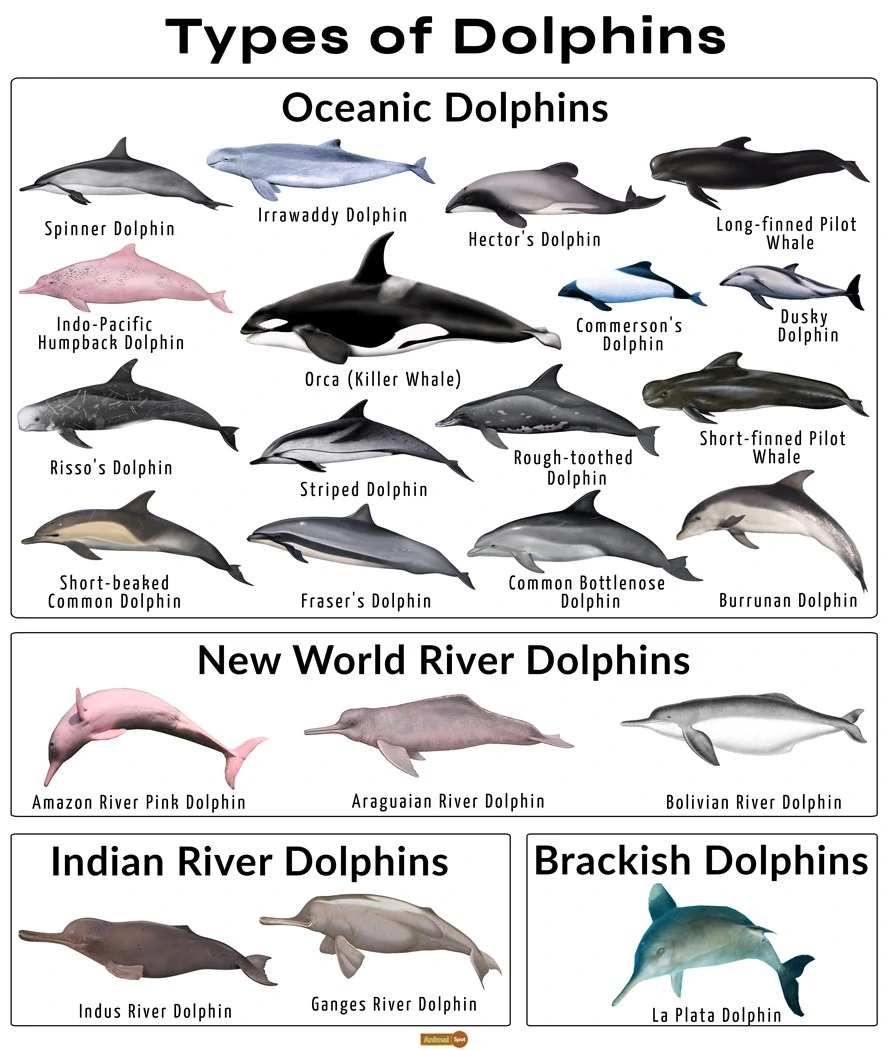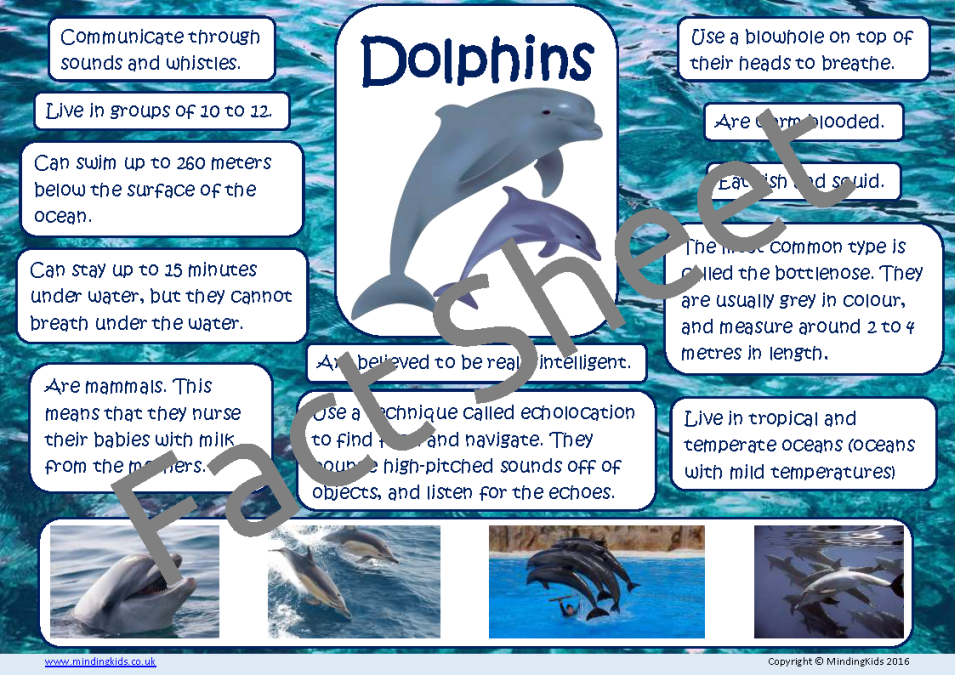Learn How Dolphin Facts Reveal Their Lifespan and Breeding Behaviors
Wiki Article
Dive Into the Sea: Captivating Dolphin Realities for Sea Lovers
The world of dolphins presents a fascinating intersection of intelligence, social actions, and ecological relevance. From their intricate interaction methods to their remarkable analytical capabilities, dolphins test our understanding of animal knowledge.Dolphin Types Diversity
Variety is a hallmark of the dolphin household, incorporating a large range of types that show unique physical attributes, habits, and habitats. The family members Delphinidae, typically referred to as oceanic dolphins, comprises about 37 species, each adapted to details environmental specific niches. For example, the bottlenose dolphin (Tursiops truncatus) is renowned for its knowledge and convenience, prospering in both open and seaside ocean settings.In comparison, the whale (Orcinus orca), usually described as the killer whale, is the largest participant of the dolphin family and is identified by its striking black-and-white coloration. Orcas demonstrate intricate social structures and hunting strategies, showcasing the behavior variety within the family members. Other species, such as the spinner dolphin (Stenella longirostris), are kept in mind for their acrobatic screens and preference for warmer waters, highlighting the adaptability of dolphins to different aquatic ecosystems.
Furthermore, river dolphins, including the pink river dolphin (Inia geoffrensis), occupy freshwater environments, additionally showing the considerable environments that dolphins occupy. Dolphin Facts. This extraordinary diversity not only enhances marine ecosystems but also emphasizes the value of conservation initiatives to shield these remarkable animals and their atmospheres
Social Behavior and Communication
The elaborate social habits and communication approaches of dolphins are crucial components of their presence, helping with group cohesion and improving survival. These very intelligent marine animals show complicated social structures, frequently creating shells that can range from a couple of people to over a hundred. Within these groups, dolphins take part in actions such as cooperative searching, social play, and mutual protection, which promote solid bonds among members.Dolphins utilize an innovative variety of articulations, consisting of clicks, whistles, and body language, to share details and reveal emotions. Their signature whistles function as special identifiers, akin to names, enabling people to call out to each other. This vocal interaction is enhanced by non-verbal signals, such as leaping, slapping the water, and integrated swimming, which even more enhances their communications.

Unique Feeding Habits
One-of-a-kind feeding routines define dolphins, showcasing their adaptability and intelligence in numerous marine environments. These aquatic animals are recognized for their varied diet plans, which mainly include fish, squid, and shellfishes. Their hunting methods can differ significantly, commonly customized to the particular target and environmental problems.One notable technique is participating hunting, where dolphins operate in groups to herd colleges of fish into tight developments, making it easier for people to catch their dish. This social habits not just enhances their feeding performance yet likewise strengthens social bonds within the husk. Furthermore, dolphins have been observed using a method called "fish-whacking," where they utilize their tails to stun or disorient fish, promoting simpler capture.
One more fascinating feeding habit is echolocation, which allows dolphins to discover victim also in murky waters. By emitting acoustic waves and translating the returning echoes, they can identify the dimension, shape, and place of their targets. This exceptional capability emphasizes their adaptability in various environments, from shallow coastal locations to deeper nautical waters. Overall, the distinct feeding routines of dolphins highlight their role as knowledgeable predators within the marine environment, showing both intelligence and resourcefulness. see it here
Knowledge and Issue Fixing
Their knowledge is obvious in their problem-solving abilities, social interactions, and capability for knowing. Research has actually demonstrated that dolphins can use tools, such find out as utilizing marine sponges to secure their rostrums while foraging on the seafloor.Furthermore, dolphins exhibit innovative communication abilities, utilizing a complex system of clicks, whistles, and body language. Dolphin Facts. This interaction is vital for coordinating group activities, such as hunting and socializing, highlighting their capability to work collectively towards an usual objective. Their capacity to recognize abstract principles, consisting of self-recognition in mirrors, additionally highlights their cognitive sophistication
In regulated researches, dolphins have revealed a capacity to resolve puzzles and execute jobs that require both memory and essential reasoning. These communications indicate not just knowledge yet also a determination to involve with their environment in unique methods. In general, the cognitive prowess of dolphins positions them among the most smart species on the world, promoting a deeper admiration for their function in aquatic ecological communities.
Conservation and Environmental Effect
Preservation efforts intended at securing aquatic ecosystems are critical for protecting dolphin populaces and their habitats. Dolphins are very sensitive to environmental adjustments, and their survival is elaborately connected to the wellness of nautical communities. Overfishing, air pollution, and climate change position substantial hazards to both dolphins and their settings.Overfishing interferes with the food web, leading to a decline in target species crucial for dolphin survival. Moreover, contaminants such as plastics and chemicals collect in aquatic settings, endangering dolphins via consumption and bioaccumulation. Increased water temperature levels and ocean acidification, effects of environment adjustment, additionally jeopardize the delicate equilibrium of aquatic communities, impacting dolphin reproduction and migratory patterns.
By focusing on conservation efforts, we can make sure that future generations take pleasure in the elegance and vitality of dolphins and the seas they populate. Securing aquatic ecosystems is not just concerning conserving dolphins; it is regarding protecting the intricate internet of life that sustains us all.
Final Thought
Dolphins exhibit the complexity and splendor of visit this page aquatic life via their varied types, complex social frameworks, and advanced cognitive capabilities. As vital components of aquatic ecosystems, dolphins underscore the necessity of recurring conservation initiatives to secure their habitats.Various other types, such as the spinner dolphin (Stenella longirostris), are noted for their acrobatic display screens and choice for warmer waters, highlighting the versatility of dolphins to various marine ecosystems.
Overall, the unique feeding routines of dolphins highlight their role as skilled killers within the aquatic ecosystem, demonstrating both intelligence and ingenuity.
On the whole, the cognitive prowess of dolphins puts them among the most intelligent species on the earth, promoting a much deeper gratitude for their duty in aquatic ecological communities.

Report this wiki page